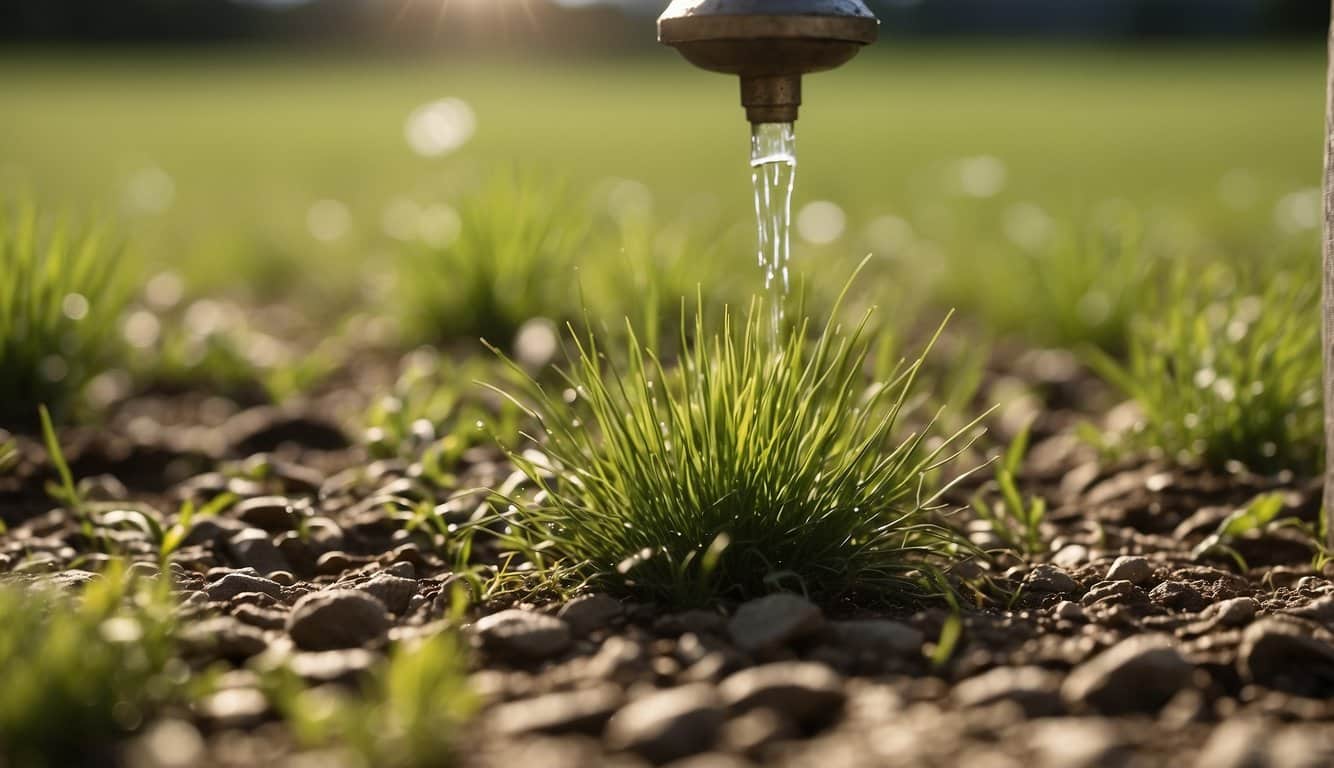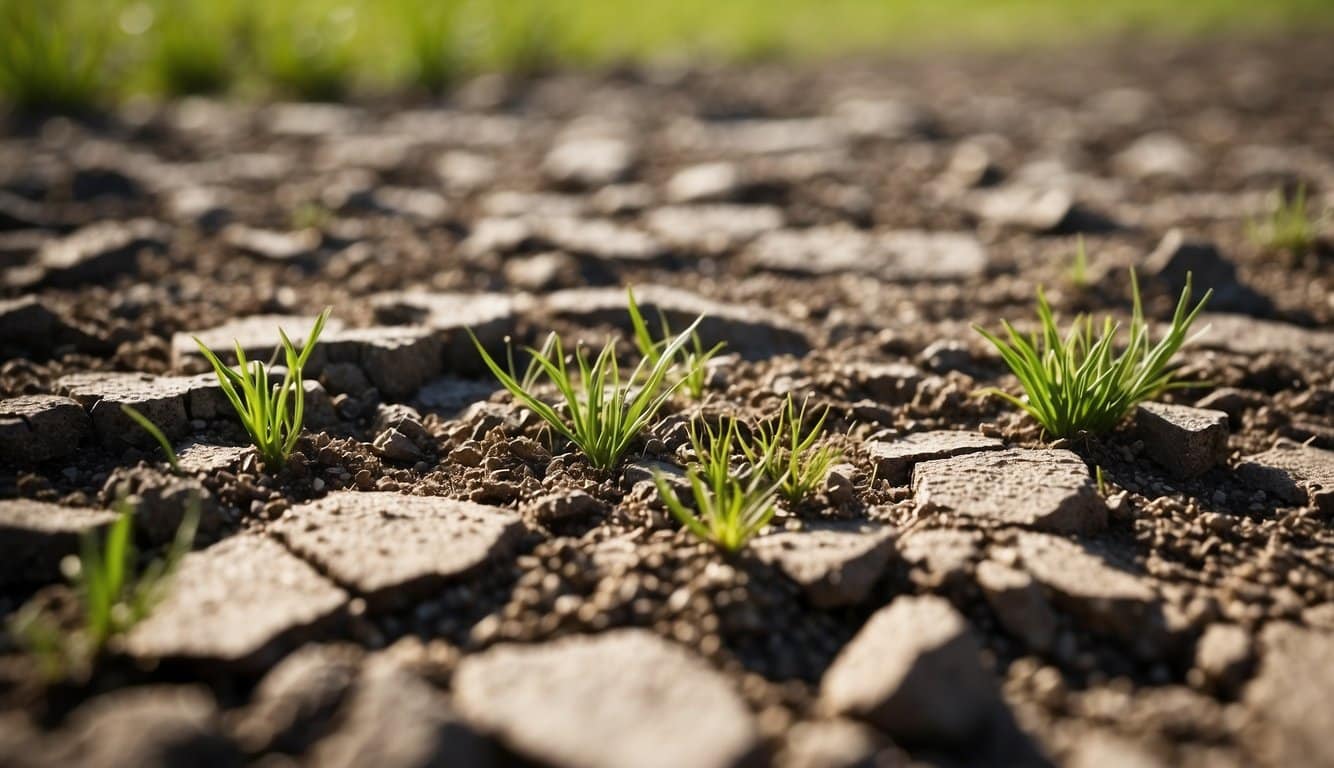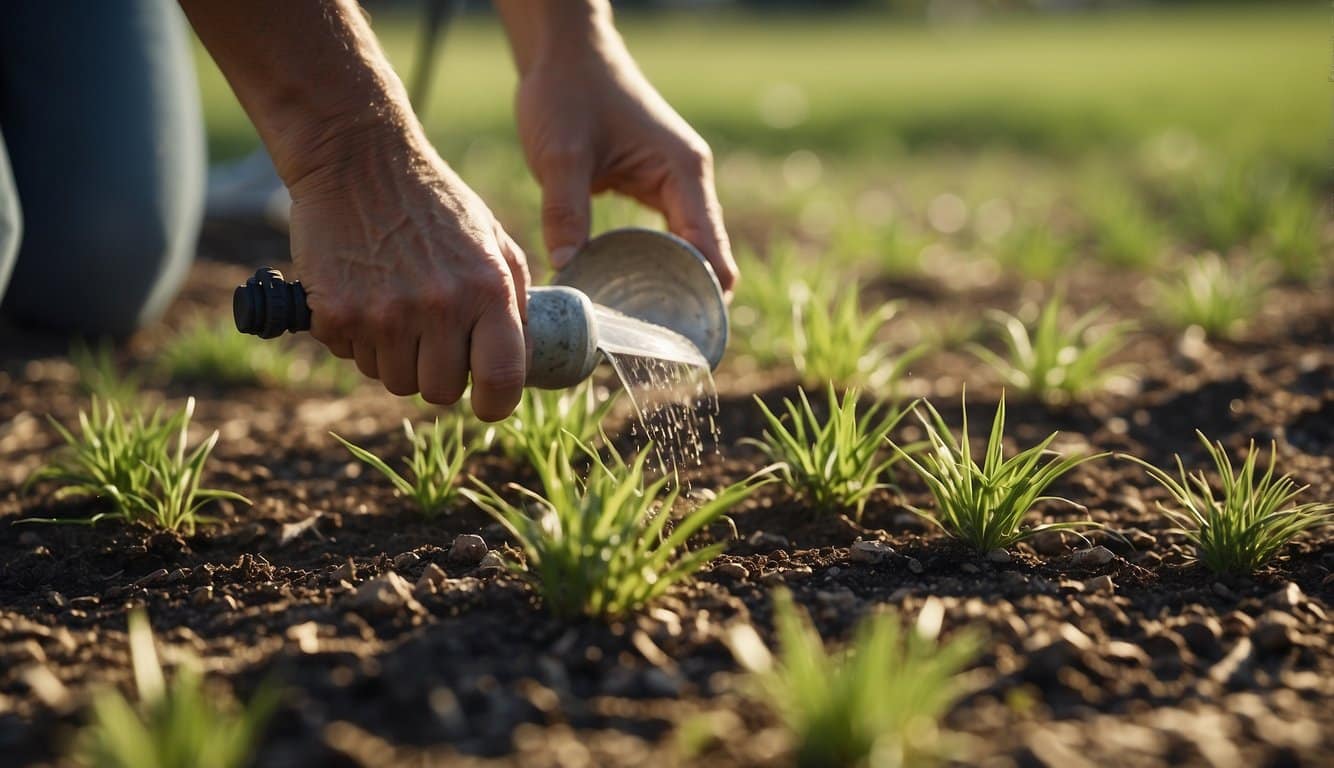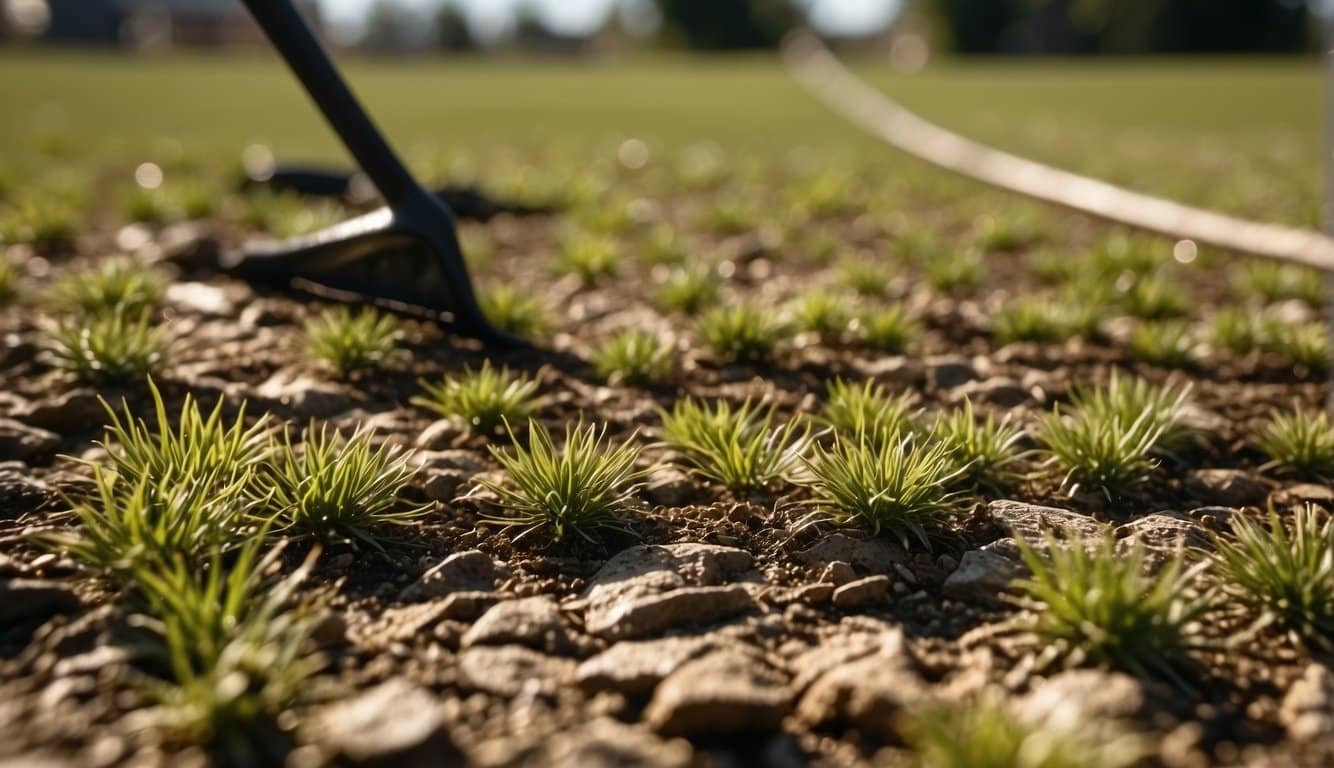Step By Step Guide To Repairing Your Drought Stricken Grass
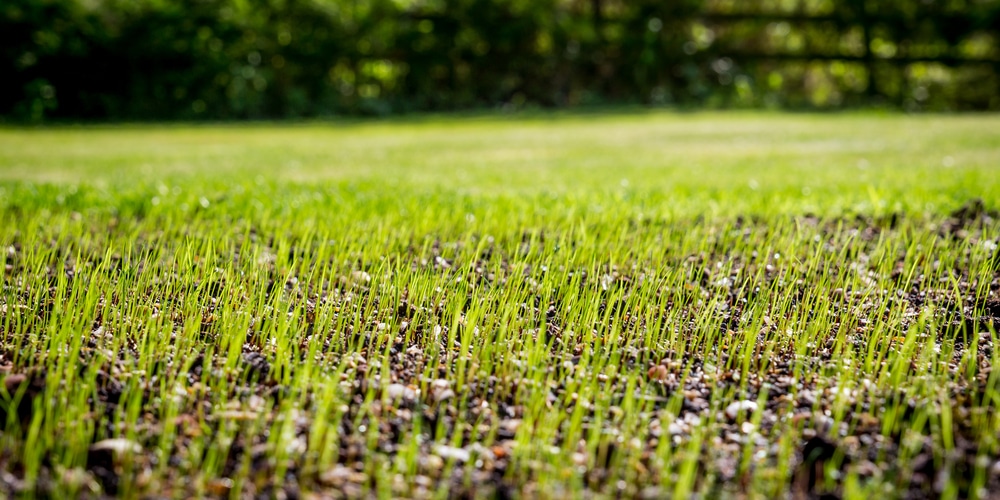
Step 1: Assess the Lawn’s Condition
- Question: Is the lawn brown, dry, and showing signs of stress due to drought?
- Yes: Proceed to Step 2.
- No: Continue regular lawn maintenance practices.
Step 2: Watering
- Question: Is the soil dry and compacted?
- Yes: Begin by deeply watering the lawn to moisten the soil to a depth of 6-8 inches.
- No: Skip to Step 3.
Step 3: Adjust Watering Schedule
- Question: Is the lawn receiving sufficient water?
- Yes: Continue regular watering practices, ensuring the soil remains consistently moist but not waterlogged.
- No: Increase watering frequency and duration, especially during dry periods.
Step 4: Soil Improvement
- Question: Is the soil compacted or lacking in organic matter?
- Yes: Aerate the lawn to improve soil aeration and water penetration.
- No: Proceed to Step 5.
Step 5: Fertilization
- Question: Has the lawn been fertilized recently?
- Yes: Apply a balanced fertilizer with a higher nitrogen content to promote grass growth.
- No: Apply a slow-release fertilizer to provide nutrients gradually over time.
Step 6: Overseeding
- Question: Are there bare or thin areas in the lawn?
- Yes: Overseed these areas with drought-tolerant grass species suitable for Missouri’s climate, such as tall fescue or fine fescue.
- No: Skip to Step 7.
Step 7: Mowing
- Question: Is the lawn overgrown or unevenly mowed?
- Yes: Mow the lawn to the appropriate height for the grass species, removing no more than one-third of the grass blade height at a time.
- No: Proceed to Step 8.
Step 8: Monitor and Maintain
- Action: Regularly monitor the lawn’s condition and adjust watering, fertilization, and maintenance practices as needed.
- Note: It may take several weeks for the lawn to fully recover from drought stress.
Step 9: Consider Professional Help
- Question: Are you struggling to revive the lawn on your own?
- Yes: Consult with a lawn care professional or extension agent for personalized advice and assistance.
- No: Continue with your efforts to revive the lawn using the steps outlined.
Step 10: Implement Long-Term Solutions
- Action: Take steps to improve the lawn’s resilience to future droughts, such as:
- Improving Soil Health: Regularly aerate and amend the soil with organic matter to enhance water retention.
- Choosing Drought-Tolerant Grass Varieties: Consider reseeding with grass varieties that are well-adapted to Missouri’s climate and require less water.
Understanding Lawn Drought in Missouri
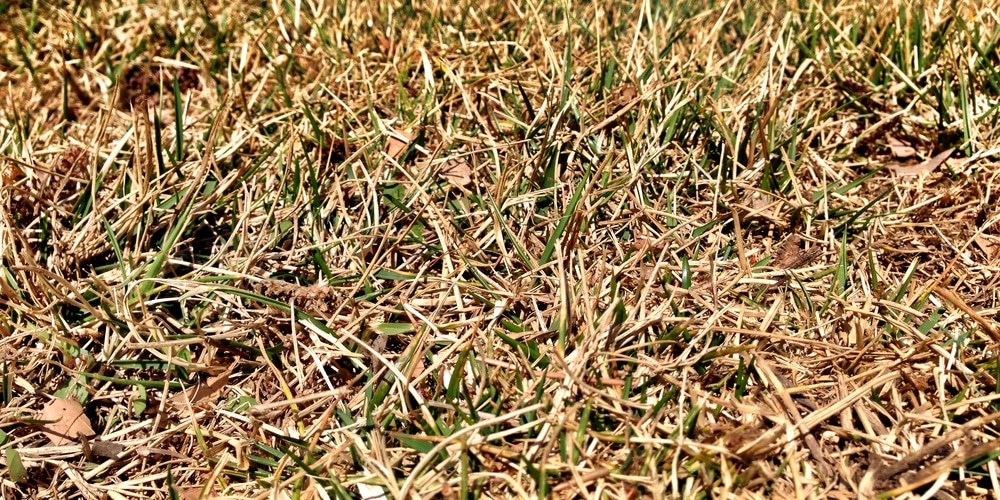
Missouri lawns can suffer from drought, leading to stressed and damaged grass.
Recognizing drought stress and understanding the climate’s impact are vital steps towards recovery.
Identifying Drought Stress
When a lawn experiences drought, the first signs include a change in color from vibrant green to dull grayish-green and eventually brown.
Footprints that remain on the lawn long after being made indicate that the grass is not springing back due to lack of moisture.
Checking the soil is another method to confirm drought conditions—dry, hard soil is a telltale sign.
Missouri Climate Impact on Lawns
Missouri’s climate varies from humid continental to humid subtropical with hot summers and cold winters.
The health of a lawn can greatly fluctuate with local weather patterns, especially during the peak heat of summer.
Missouri’s precipitation trends play a role in drought occurrences.
Drought conditions can arise from a combination of high temperatures, increased evaporation rates, and lack of rainfall during critical growth periods for grass.
Initial Lawn Recovery Steps
In the wake of a drought in Missouri, initiating the revival of one’s lawn demands meticulous attention to the removal of dead organic material and the adoption of efficient watering practices.
Removing Thatch and Weeds
Thatch Removal: A critical first step in lawn recovery is to remove thatch—the layer of dead grass and roots on the soil surface.
Homeowners should use a steel rake to gently but thoroughly clear away the thatch.
This process allows for better water penetration and air circulation, which are vital for healthy grass.
Weed Control: Concurrently, weeds, which can exploit weakened lawns, must be extracted.
They should perform this task by hand for precision or employ a weeding tool to ensure the complete removal of root systems. Proper removal prevents weeds from competing with new grass for essential nutrients and water.
Proper Watering Techniques
Watering Schedule: Lawns should be watered deeply but infrequently to encourage deep root growth.
They recommend an early morning schedule to minimize evaporation and to give grass blades time to dry, thus reducing the risk of fungal diseases.
Technique: It is essential to use a method that delivers a uniform amount of water across the lawn.
Homeowners might consider using a sprinkler system paired with a rain gauge to ensure the lawn receives approximately one inch of water per week.
Soil Health and Fertilization
Ensuring soil health and selecting the correct fertilizer are pivotal steps in rejuvenating a drought-affected lawn in Missouri.
Soil Testing and Amendment
Before applying any fertilizers, homeowners should test their soil to determine its nutrient makeup and pH levels.
Soil tests typically reveal deficiencies that can be corrected through specific amendments, optimizing the conditions for lawn recovery.
- pH Level: Missouri soils often vary in pH levels; ideal grass-growing conditions require a pH between 6.0 and 7.0.
- Nutrient Profile: The test can indicate a lack of nutrients such as nitrogen, phosphorus, or potassium, which are crucial for grass growth.
To amend the soil, one may need to:
- Add lime to raise the pH if the soil is too acidic.
- Incorporate sulfur to lower the pH if the soil is too alkaline.
- Modify the soil with organic matter, like compost, to improve structure and nutrient content.
Choosing the Right Fertilizer
The choice of fertilizer is essential in the recovery process post-drought, and it should match the specific needs identified by the soil test.
- Low Nitrogen Fertilizers: Appropriate for lawns starting to green but still have brown patches.
- Slow-release Fertilizers: Options like Milorganite aid in gradual nutrient release without overwhelming the stressed grass.
Fertilizer application tips for Missouri lawns:
- Use a drop spreader for even distribution of the fertilizer.
- Fertilizers are best applied when the lawn is not in full sun to prevent burning the grass.
- Water lightly after fertilization to help the soil absorb the nutrients.
Reseeding and Over-Seeding
Reviving a lawn after drought requires knowledge of proper seeding techniques and the selection of suitable grass types for Missouri’s climate.
Selecting Drought-Resistant Grass Types
When choosing grass types for reseeding, one must prioritize drought-resistance to ensure lawn resilience in harsh conditions.
In Missouri, cool-season grasses like Tall Fescue and Kentucky Bluegrass are commendable picks due to their tolerance to temperature fluctuations and modest water requirements. The following table outlines grass types and their drought-resistant properties:
| Grass Type | Drought Resistance | Maintenance Notes |
|---|---|---|
| Tall Fescue | High | Deep root system, tolerates heat stress |
| Kentucky Bluegrass | Moderate | Dense growth, recovers well |
| Buffalograss | High | Native prairie grass, less mowing |
Seeding Process and Care
Preparation is crucial; begin by raking the area to remove dead grass and loosen the top layer of soil, improving seed-to-soil contact.
Apply grass seed at the recommended rate, which can vary by species. For example, Tall Fescue is typically seeded at 8-10 pounds per 1,000 square feet.
After seeding, the care regime should include:
- Watering: Keep the soil consistently moist but not saturated to encourage germination. Gradually reduce frequency as grass establishes.
- Mowing: Begin once grass reaches 3 inches, cutting no more than one-third of the height to promote strong roots.
For over-seeding existing lawns, use a seed spreader to evenly distribute seeds across the lawn.
Aerate the soil beforehand to enhance seed contact with the soil. Over-seeding aids in filling sparse areas, improving lawn density and its overall drought resistance.
Long-Term Lawn Maintenance
Maintaining a healthy lawn in Missouri over the long term requires consistent care and attention to various critical aspects.
Homeowners should establish a regular maintenance routine that emphasizes the following practices:
Watering:
- Depth: Encourage deep root growth by watering deeply but infrequently.
- Schedule: Early morning is the best time to water, reducing evaporation and fungal diseases.
Fertilization:
- Seasonal Application: Apply fertilizer during active growth seasons, typically spring and fall.
- Right Formula: Choose a fertilizer suitable for Missouri’s climate and the specific type of grass.
Mowing:
- Height: Keep grass blades taller to promote deeper roots and stress resistance; typically, 2-4 inches.
- Frequency: Mow often enough that no more than 1/3 of the grass blade is removed at once.
Aeration:
- Use a core aerator to alleviate soil compaction and improve water, nutrient, and air penetration to the roots.
Weed Control:
- Prevention: Promote thick grass growth to naturally suppress weeds.
- Management: Remove weeds by hand or apply appropriate herbicides sparingly.
Dethatching:
- Remove thick thatch layers to allow nutrients to reach the soil and roots.
Overseeding:
- Introduce new grass seeds to fill in bare spots and enhance turf density.
Frequently Asked Questions
Reviving a lawn in Missouri after a drought involves both reestablishing healthy grass and modifying lawn care practices for better resilience. This section addresses common concerns and effective strategies for lawn recovery.
What are effective methods for regrowing grass in areas affected by drought?
They can begin by reseeding barren patches and applying slow-release, low-nitrogen fertilizers.
What steps can homeowners take to revive dead grass quickly?
Homeowners should remove the dead grass with a steel rake and apply a combination of grass seed and fertilizer suited for Missouri’s climate.
Ensuring adequate soil moisture and avoiding foot traffic on the new seedlings contribute to quicker regrowth.
Is it possible for lawns to recover after severe drought conditions, and how?
Yes, lawns can recover from severe drought. Recovery involves implementing strategic watering, often 1 inch of water every 10 to 14 days, and applying the appropriate fertilizer to help rejuvenate the grass.
What practices should be followed for mowing a lawn that has been stressed by drought?
Individuals should raise the mowing height to help shade and protect the roots.
They should also mow only when necessary and leave the clippings on the lawn to retain moisture and provide nutrients.
Can a lawn aerator improve the condition of a drought-stricken lawn, and how should it be used?
Using a lawn aerator can be beneficial for a drought-stricken lawn as it allows air, water, and nutrients to penetrate the soil more effectively.
They should aerate during a cooler period when the lawn is not under stress.
How long does it typically take for a drought-affected lawn to return to a healthy green state?
The recovery time can vary, but typically a drought-stricken lawn in Missouri may begin to show signs of improvement within a few weeks of implementing recovery practices. Full recovery takes several months depending on the lawn’s condition and ongoing care.
Last update on 2024-05-18 / Affiliate links / Images from Amazon Product Advertising API



